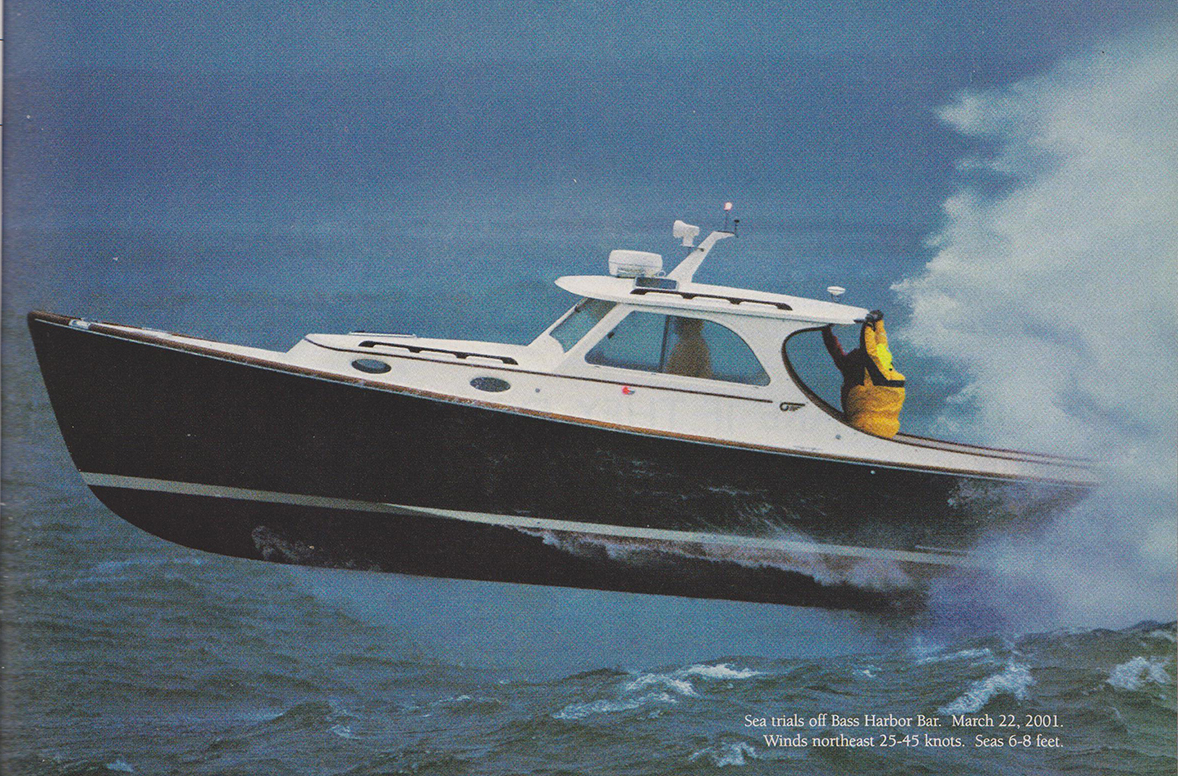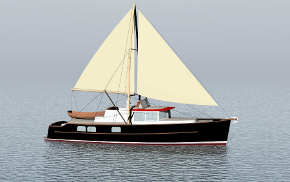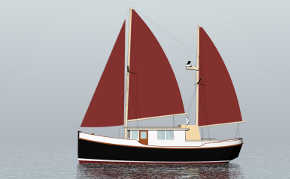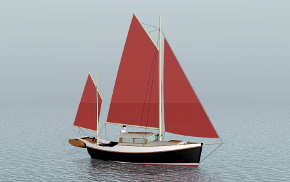High-Speed Hull Design
I drew the Hinckley 36′ Picnic Boat in May of 1993, 20 years ago now. The commission was for a waterjet powered day boat, maximum speed to be 30 knots. I doubt I considered the use shown in the picture above. But of course this is the designer’s job, worry about the worst case. As the boat above lands on the next wave her hull may see loads of over a ton on one square foot of bottom area.
By 1993 I had two successful high-speed hull designs to my credit. The 75mph Rooster and the 40 knot sportfisherman Dixie, both built of cold-molded wood by Hodgdon Yachts in East Boothbay. Both those boats were designed for speeds greater than the Hinckley would see, and thus both have higher deadrise bottoms. Rooster’s hull is 19 degrees at the transom while Dixie is one or two degrees less. Transom deadrise for the Picnic Boat is 15 degrees. Skin thickness for Rooster is 1.25″ in four diagonal layers of Douglas Fir, and I think Dixie might be 1″ of the same. Rooster has deep longitudinal bottom girders spaced 9-11″ apart, while those in Dixie are spaced about 15″. I think the Picnic Boat originally had a 1″ Airex foam core in her bottom, and Divinycell or Klegecell core in her topsides, plus an exotic (for the time) layup of Carbon, Kevlar, and glass.
In the fall of 1993 we had Pete DeSaix run two models in the test tank at Webb Institute. One was the sharp vee-bottom that the Picnic Boat became, the other was a bell-bottom version close to what I thought Don Blount was doing for Rybovich at the time. We ran the hulls at three displacements; 9, 11, and 13,000 pounds. The vee-bottom was better at all but the lowest speeds, that is less than 12.5 knots. Resistance was lower and trim was less. At this point I had more questions than answers, and I wanted to cut the models in half and switch them around. But we were out of time and production people were ready to start……
The Hinckley Picnic Boat went into production and became a success shared by many people. But her hull comes almost directly from the lessons I received from William Garden and my YDI instructor, Hans True. Both of them emphasized the importance of getting the LCB in the right place for the speed anticipated. Get that right and everything else follows.
-
External Links
- Sorry, no links have been posted




